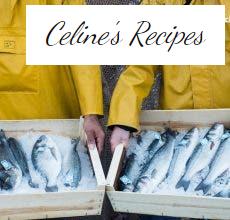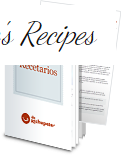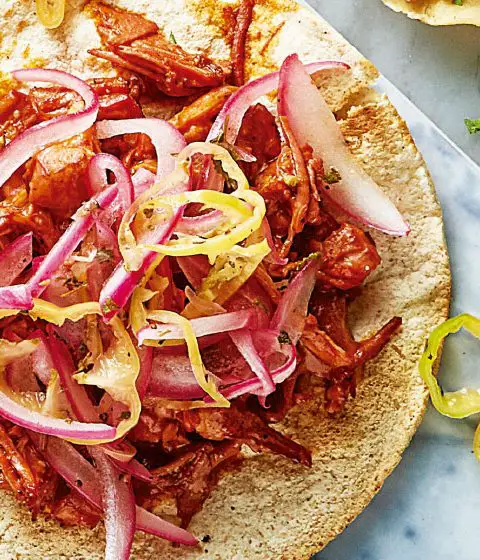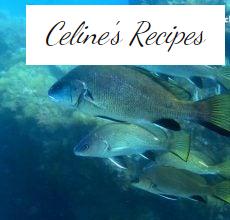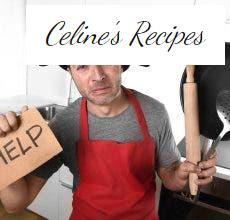The origins of Paella.
“In all Valencian lands, paella reigns supreme, with glittering and varied glory. Wonderful is the Valencian. No one can object to its quality, which remains unfaithful through the centuries: from the days when an ambassador of Louis XIV (1638-1715), wise in all culinary arts, died, however, after three days to disembark, full of Valencian paella, until today, when one of the great surgeons of America confided to me that for a Valencian paella like the one he had just tasted, he would change the entire Prado Museum ”Gregorio Marañón

All gastronomy has been preceded by a religious motive. Paella too.
But, unlike dishes that are content with having an anecdotal precedent in the kitchen of antiquity, paella has created a particular religion and today has its Popes and its anti-Popes; its icons and its iconoclasts, its emoticon and its own Wikipedia.
And as all gastronomic experts know, and you should also know, every time someone makes paella wrong, God kills a kitten.
The paella of the 21st century is no longer baroque: it is a political, globalized, hypernormalized dish, real within the chaos of history and gastronomy, disputed, demanded, diversified and competitive.
The infallible recipe that the Galician Julio Camba revealed in his section on popular dishes is still in force: “take the train and leave for Valencia “, as this advice encourages not to discuss the ingredients of the dish, to see things for yourself and to travel.
To know the origins of things it is not necessary to be native and not have moved from the same place for generations. Its own origins are discovered knowing the rest of the world and comparing it with our global village, which is becoming more village every day.
LA PAELLA OR RICE A LA VALENCIANA
Camba opens its chapter on Spanish cuisine with ” Arroz a la valenciana ” referring to paella .
It is the best known of the many rice cooked in the Community, due to the uniqueness and size of the frying pan where it is cooked, for its showy color, for the elaborate type of cooking and for the combination of its ingredients.
In fact, the paella has multiple versions, different between neighboring towns of València. These versions vary little outside of the basic ingredients (virgin olive oil, water, rice, saffron, chicken, haricot bean, locust bean, salt, tomato and – bordering on non-admission – the rabbit) but change their flavor, texture or even colored in a more or less determining way depending on the differentiating ingredient: paprika, mountain snails, rosemary, garlic, “tavella” beans, artichokes, pork or duck ribs; in addition to the red pepper that the Alicante paella carries, or rabbit and snails that the interior paella can also carry, with other variants such as thyme, pepper or chickpeas.
But before delving into the origin of the ingredients, let’s know what the origin of the word “paella” is.
ETYMOLOGY OF “PAELLA”
The word paella began to be used in Spanish around 1900, to refer to any rice dish that was cooked in a large frying pan with handles.
After the pot, the name “paella” is one of the first gastronomic-cultural metonymies, since it makes this stew the main stereotype of a place in a continuous vacation state -remember that València is the first beach in Madrid- where people have fun burning things while popping little powder bombs and drinking very sweet things.
In Valencia the word paella means frying pan. So “paella” is also a synecdoche (* 1).
Although linguists say that the word paella comes from the Roman frying pan patella (or sartagus, from where the Spanish word frying pan comes from), it provided a handle to handle it while paella is more similar to the discus of the low imperial period, where the custom collective eating habits, coinciding with Valencian and Arab customs, was more frequent.
Carlos Azcoytia argues that he had found a container in a book by a papal cook named Papal, and that it could have been brought by Italian or Spanish soldiers when Naples belonged to the Spanish empire. Go find out which of the theories is the true one.

In fact, the word paella does not appear in the oldest recipes of Valencian gastronomy, surely because the grain of that time, coarse, in shell and unpolished, would be used to make flour and not cooking.
In fact, rice is a repeatedly prohibited element in various periods of the history of Valencia since the creation of the Kingdom in 1238 as it is the stagnant waters where one of the main causes of the direct manifestation of epidemics of malaria, an endemic disease, was cultivated. Valencian that allows us natives not to have to be vaccinated.
The cultivation of rice is formally prohibited in the vicinity of the city in 1342 by the King of Aragon Pere IV the Ceremonious; in 1403 by Martin the Human throughout the Kingdom; in 1467 by Alfonso V the Magnanimous , who established the contraveners to death penalty; in 1547 by Alfonso VI ; by Carlos I on an undetermined date; Even the authorities of some municipalities complain that King Carlos III returned to admit its cultivation in 1777 to feed the troops that were fighting against Algiers. And we must cite the privilege given in the Torre del Grec, on February 1, 1357, for which the inhabitants of Castellón de la Plana were forgiven for paying certain censuses in attention to diseases, and death suffered by the “pestilence , of the waters”.
What does this mean? Well, if rice was ever cultivated, it was for its easy cultivation in areas of little use, such as wetlands around La Albufera, Alicante and Castellón. Undoubtedly in the hands of the poorest farmers, poor as Blasco Ibáñez still portrayed in Cañas y Barro, and who never left written mentions of their culinary recipes.
Until 1873 the Spanish production of rice was totally absorbed by national consumption, until the surplus began to be exported, the golden age of this product in Spain and I believe that with those first profits, the approximate date of consolidation, slow and varied according to the areas, from the closest paella recipe to the current gastronomic tradition.
Not because of a scientific question that can be empirically demonstrated, but because when you have the respite of being able to live better and with the abundance of a product from the countryside among humble people, you can dedicate yourself to inventing recipes calmly.
VARIETIES OF RICE DO VALENCIANA

The rice of València, with an ancient history and therefore with Denomination of Origin, has three types of varieties: Bomba, Senia and Albufera.
1- SENIA rice
The Senia type is the most used for paella and all kinds of “a banda” rice, baked rice, dry rice in general, syrupy and broth, and you even have to dare to use it for risottos.
Therefore it is indicated for all the rice dishes of traditional Mediterranean cuisine and, mind you, it has a reference in the Mercadona product catalog.
It is a type of cheap, round rice that absorbs the broth very well and deeply adopts its flavor, it has a glutinous texture and once cooked it is quite juicy, that is, once cooked at its point it will not stay hard .
All these advantages have a single but important drawback: it is more difficult to cook since if you go beyond the cooking point, the rice is easily passed or pasted, that is, it looks like the texture of overcooked noodles. Also, if the paella is not eaten immediately after its preparation, its grains tend to stick or cake.
Formerly, another variety called Bahía predominated. And today the Senia variety has been replaced by other very similar varieties that are more productive in the Valencian fields such as the varieties: Gleva, J. Sendra, Fonsa, Montsianell, etc. They are nearby varieties; for this reason they are generically referred to as Senia Type Rice, Senia-Bahía Type Rice, or simply Traditional Rice.
2- PUMP rice
Bomba rice is an ancient variety whose first written references date back to 1913, the year of the creation of the Swedish Rice Station, a unit of agricultural studies, after the disastrous harvest of 1911, imitating the scientific institutions of Italy, the United States, and the Philippines. , India or Japan.
This variety of very little production but has continued to be cultivated for its gastronomic characteristics: it also has a great capacity for absorbing flavor, like the other varieties of rice from the Arroz de Valencia DO, but achieves a firm and loose grain.
Once cooked, the grain evolves positively, since as the grain cools it acquires a greater consistency, unlike most commercial varieties, and exudes part of the liquid absorbed during cooking, making it even more tasty and juicy a few minutes after taken out of the fire.
It is a rice that does not go over cooking: once the starch has gelatinized, the grain opens wide instead of lengthwise, so it maintains a pleasant texture even if we prolong cooking for a few minutes after it has been cooked.
Although it is the most useful to be well in front of the guests, many Valencians consider that when making paella with Bomba, not only does the grain not absorb the broth as much as it exudes the broth, but it is also a rice used by those who least control the cooking, which we have already said is the quiz of the paellistic question.
Against it it has to be much more expensive, about 3 or 4 times more than traditional rice, although it also yields one or two more servings per kilo.
On the blog you will see a lot of rice recipes with this type of variety. Being La Fallera rice and SOS bomba rice the most common to prepare Valencian paella.
3- ALBUFERA rice
The third type of rice is Albufera, from the Japanese family, that is, round grain, pearly and crystalline. It is a variety of recent appearance resulting from the crossing between the Senia and Bomba varieties, which is grown only in the ecological environment of the Albufera Natural Park.
By keeping a more balanced ratio between amylose and amylopectin (* 2), it brings together the best virtues of the two rices from which it comes, making its use more and more popular among catering professionals.
During cooking and with the gelling of the starch, the grain opens with an “accordion” effect, which allows the rice to absorb a large amount of the flavor of the broth in which it is cooked, but nevertheless it is loose and it is not pasted, but rather a Once cooked, it is very creamy with a firm texture. Once removed from the fire, the grain does not evolve. In other words, it does not have the creative emotion of Senia, but it is a very conservative rice.
Its production almost doubles that of Bomba, since being the most resistant plant, with the lowest growth in height, it is less sensitive to storms or winds. Therefore, its price is also lower.
In addition to traditional recipes, it works well on sweet rice. You need approximately 3.5 parts of broth for each rice in dry rice.
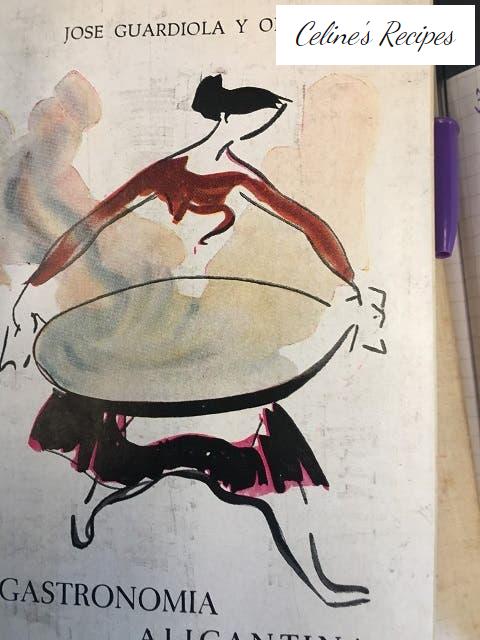
ORIGINS OF THE WAY TO COOK LA PAELLA
Although the way of cooking it, with the water just until it evaporates, is reminiscent of the ancient Pilav technique with some contributions from the kateh technique , delicious rice stews from Persian cuisine (the second with a great role for saffron), the popular ones Today’s paella ingredients reveal a much closer origin in time than the one that Dionisio Pérez Gutiérrez cites in his 1929 regional food catalog and in which he tells that paella is made with eels, snails and green beans, without giving Dionisio mentions the friendly garden rat, probably due to modesty.
Tomato as an essential ingredient rules out an origin prior to 1800 and it is undoubtedly romanticism that promotes this dish since among the enormous variety of culinary images that decorate the kitchen tiles of the Baroque Palace of the Marquis of Two Waters of Valencia, although you see a device with two handles similar to a paella pan or a brazier, our famous dish does not appear clearly represented, no doubt due to the rural character of its preparation.

Nor does the processing of rice, its bleaching and polishing, take place until the Industrial Revolution, with the arrival of the mills. Thanks to these procedures, this cereal can be cooked and stored, although taking away its nutritional properties, but in a tastier, simpler way and in accordance with modern times.
Nor can all the products with which they are made be guaranteed as historical since, since it is not a seasonal dish or motivated by some religious need, the preservation of the ingredients would not have been possible until the invention of freezing or the can of preserves.

THE ROMANTIC PAELLA
In all ages complicated ideas linked to this dish appear, so simple in the background.
Romanticism projected a confusing image of richness and sensuality to the iconography of paella, where smiling women in meat and dressed in multicolored embroidered silk elaborated this delicacy while hardworking farmers worked the rice fields helped by horses.
Romanticism also took away the rigor of the neoclassical laws of paella, based on natural selection, to fill pages with impossible myths and the intervention of culinary laws that, as we will see later, for many years were strictly followed.
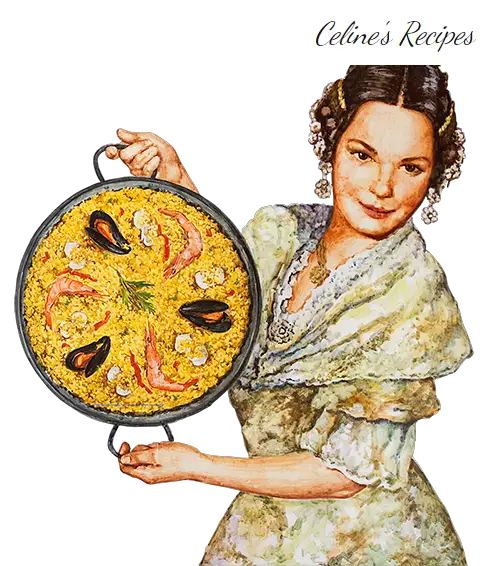
INTEGRATING EFFECT OF THE PAELLA
It is rarely said that paella is a dish that has an integrating effect. It is not only that the rounded shape of the frying pan possesses the same democratic mystical qualities of the Arthurian table, where no one is in a privileged position in front of another (with the only condition, in the case of paella, that the table where it is served it is not rectangular) but the difficulty of obtaining the point of the rice confers to the one who obtains this gift the same moral authority as that of the one who is able to extract the Excalibur sword from the rock.
When my father arrived from Lugo in the very closed post-war city of València, one of his first ideas for joining was learning to make paellas.
In fact, making paellas in Valencia is traditionally a thing for men, and specifically for married men who work in the fields. In 1963 my father won the 4th paellas prize organized by La Voz de Levante with the Confederación Sindical de Arroceros of the city of Sueca, which earned him many points for his integration.
My father knew how to make paella with firewood, in the field, resting the container on stones, with four edible items that he carried in a bag and a carafe of water that he always carried in the car preserved with rosemary.
That was worth having the Valencian card that is always distributed by the holders of great virtues and national values. Of course, my father, like all the parents of Valencia, towards the paella on Sunday, wood-burning, outdoors.
My mother made it on the stove in the home kitchen, using several of them at the same time, or with the paellero or gas burner with legs invented by one of the illustrious prominent men of the city, of Irish origin, of course, the Count of Trenor.

POLITICAL ORIGINS OF LA PAELLA
Paella also has its political origins. The communist and libertarian paella despised rigid culinary laws and preferred to eat it with any ingredient, in the fields, in the shade of the trees, accompanied by wine in a jug that ran from hand to hand and chants of world fellowship.
However, it was unifying fascism that led the humble paella to high places and to the palates of the leaders. After the fight, the paella had the nutritional and economic virtues of the dishes that are cooked with rice, little protein, satiety, a lot of energy and tasty.
In May 1937, the newspaper Fragua Social de Valencia announced a day of “vegetarian fraternization” under the slogan “for the total regeneration of humanity, for its complete liberation and for the soon-desired universal peace.”
The agreed meeting place was the farmhouse in Vallesa de Mandor (Riba-roja de Túria, Valencia), where “all vegetarians and sympathizers” were invited to a “eutrophic vegetarian paella”, that is, a paella made with vegetables but food.
Bad news for those who count their calorie intake and eat only the paella vegetable: the diluted fat of the meat through frying and cooking, is conveniently distributed throughout the preparation, as we have said before, trapped by starch, so surely the least greasy are the pieces of meat.
Paella is a dish of the poor, who accompany it with a salad, or of the rich, who take it after expensive starters that satisfy their gluttony.
From this moment, tragic in the history of Spain, essential elements such as chicken disappear from paella, being replaced by any nutrient that we prefer not to talk about, and saffron, which is changed to food coloring to the point that Paellas turn into colorful LSD images with no added flavor.
That is why the great Berlanga always makes a paella appear in his films when the powers that be celebrate something and even share it with the poor as a symbol of abundance.
In “Everybody in jail”, when the politicians visit some prisoners in the cell and the prisoners tell them “less freedom and more paella, pussy”, it is because paella becomes, for some reason, the antidote to the tragedy postwar.
The sixties are crucial in the history of paella because “arroz con cosas” has supplied any traditional formula and anything that can generate benefits is sold to families who live by feeding tourists in beach bars near the beach.
The paella is democratized, allowing the Valencian woman who was going to live in Madrid with a man who had drawn an opposition, to cook it in a tall pot, with a white and very soupy grain; or that mixed paella, consisting of combining prawns, chicken, pork rib and assorted fish, was made in local desserts. Adding all the ingredients on hand, what can go wrong?
Paella becomes one of the much discussed symbols of Valencian nationalism, and an element in the fight against the Catalan invasion, always in vogue, as it aims to steal the identity of Valencia to engulf it and dissolve it within Catalan culture. I have never understood this part so I don’t know how to explain it.

In the heat of the new cheap and confusing kitchen manuals, the first romantic ideas of paella also bear fruit at that time and were consolidated in a series of absurd commandments worthy of a thesis by Pablo Casado that authenticate the valence of authentic paella that However, even today people consider good.
For example: the authentic paella must be made with firewood from an orange tree, a tree that began to be planted around the 18th century and not exactly near the places where rice is grown.
The calorific property of the orange tree is somewhat below that of oak, but it does not have other virtues different from other hardwoods that make it preferable. It is also said that if Valencian water is not used, the paella does not come out as good, because it contains more lime than others.
I do not think that palates are used to detecting minimum doses of lime among ingredients as powerful in this range of mineral flavors as saffron, but it can be understood that paella should not be made with a previously prepared broth or with mineral water. This would be their only justification.
That paella is not normally eaten at night, I do not think it is due to a logical question but one of survival: first, due to the high caloric value of the dish, second because of its long preparation that would delay dinner until dawn. You can have the paella at any time. Another thing is that they want to prepare it in a Valencian restaurant.
Regarding the clear refusal to add lemon drops to the paella, there is only one solution: not decorate the paella with this citrus. I am not at all detractor of the lemon when the paella is excessively greasy or the grain is very old.
It masks the flavor and makes it more edible. But it is a crime to add it just because, especially if the paella is good. Destroy all the effort of the cook by complying with all the rules so that he is at his point.
Although it seems contradictory, a trick to make the paella turn out good is for someone who doesn’t know how to make it to make it. By taking twice as long as it would take an experienced person, two effects occur: the drunken effect, which lowers the level of culinary demand, and the voracious appetite effect after spending two hours waiting to eat something hot.

ARCHETYPIC PAELLA
One of the problems with cliches is their rapid assimilation by the masses. As a marketing product, paella has an image that is easy to understand and reach people.
That is the main reason for its popularization. The singer Julio Iglesias, who pocketed more than five hundred million pesetas, plus some payment in B, for being the ambassador of Valencia (you know why) declared before the Russian press – Russian, not pink – that the secret of his virility was in the indiscriminate intake of this Valencian dish.
Although it seems absurd, which it is, at least his message was well thought out for the Russians, who have been obsessed for centuries with the virility and vigor that Rasputin displayed until the last day of his life. Incredible as it may seem, this dish, better known than La Charito, continues and will continue to make headlines in current news, given its fame, as El Cid fought after death.
It has even been included as an emoticon or Emoji for social networks. And without a doubt it will end up being declared as Intangible Heritage of Humanity.
In Valencia, several commissions have been created to ensure that the recipe does not become something completely perverse. They fight to popularize a recipe in accordance with Valencian customs and prevent authentic gastronomic attacks from being called paella.
You have to understand all the gastronomic critics when they are very “open” with the paella recipe, but they certainly would not like them to call the same recipe made with bittersweet German gherkins or Andalusian stew cooked with white beans in Andalusian gazpacho. instead of chickpeas.
As far as I am concerned, my mother’s recipe for paella and the one my father learned to make in the 1950s consisted of the same ingredients that academicists describe, although I understand that chicken is the fatty protein element and cheap since the middle of the 20th century. Others would be those of the XIX and perhaps in the XXI century the chicken cannot be eaten for any reason and will be replaced by another food of similar value.
It should also be borne in mind that those of us who have lived outside of Spain for a long time can understand not only that a foreigner does not understand at all what paella is and associates Spanish food with Mexican spiciness, but when they ask you to cook them a Paella, you find that it does not exist, and it is essential, a similar container to cook it, but they want you to cook paella without paella, in any container, it does not matter.
When making the purchase, you discover that the majority of rice from its supermarkets are oriental. That there is no garrofó outside of Valencia. That their green beans taste different or only have a pot. That they never use saffron, but a kind of false variety that is at least very cheap. They do not use dye, because they say it is bad for health.
That they do not have olive oil, and if they do, it is expensive. That such a diner does not like garlic and that he was in Spain and that we put garlic on everything.
That several diners are vegetarians, and that they prefer seafood paella. That they do not have a kitchen with a gas where the analogous container fits with the fire distributed evenly. But they want you to make the paella.
So finally you take the oriental rice, cut a chorizo into small pieces, add a can of peas and tell them that this is the traditional Valencian paella.
Total: They’ve drunk all the sangria you made and are too drunk to know what they’re eating. For many foreigners, chorizo is the flavor that determines their knowledge of Spanish food, just as we add soy sauce to all foods of Asian cuisine, with horror for the gastronomic sensitivity of the natives.
And as the determining flavors of a country are usually the spices with which they are seasoned, although paella as a dish represents us abroad, as a flavor we are still identified by spicy paprika.
For this reason, although we know that everyone cooks as they can, we are interested in the fact that the product that we gastronomically want to represent València has sufficient dignity within the simplicity of its composition, and that its value is not especially in its ingredients, but in the set of its elaboration that makes it tasty and recognizable.
Come on, let’s not make the aberrations that have been made in our country and in others to the original recipes of Italian cuisine adapted to our products and our economy.
FINAL POINT
Because everything has to end sometime, and we could talk about paella for years. The origin of paella is like the mystery of life: it goes back to the origin of time and is as confusing as the cric-cri of a cricket at night: we don’t know if Nature granted that call to its species to be able to communicate their desire to copulate happily in the distance or to serve as dinner for the reptiles.
Be that as it may, it is in its genetic code, as paella is in the Valencian social code in a decisive way from its origins. Don’t worry about it and, wherever you are from, first learn the rules to be able to breach them judiciously; be modest, because even the best paellas cook goes wrong with the one who wants to do the best; prepare your own paella, and make it to your liking: anyway, for the purists who populate the Earth, do it the way you do it, for them, you will always do it wrong.
Tonino Guitián – Spanish comedian and stage director. He combines his acting career with that of journalist, radio writer and writer. And above all advocate of a good paella … but also of a Galician stew.
GLOSSARY OF RARE TERMS
* 1 – synecdoche
Rhetorical figure that consists of designating one thing with the name of another with which there is an inclusion relationship, so that the name of the whole by the part or the part by the whole, matter by the object, can be used, the species by gender (and vice versa), the singular by the plural (and vice versa) or the abstract by the concrete. Example: steel, by the sword.
* 2 – gelation of starch
Gelatinization is the modifications that occur when the starch granules are treated with heat in an aqueous medium, that is, hydrogen bonds are created between the amylase and amylopectin molecules, creating spaces where water is trapped and which affects the viscosity of rice by mixing the sugar with the fats, thus capturing the flavor. When the resting gelled starch is reduced, it normally begins to exude water. So rice should never be removed so that the grain retains the starch inside. Paella is good freshly made for this reason, when cooled, the molecules release their water little by little and the grain loses flavor, although it is also better digested.
* 3 – Amylose and amylopectin.
Amylose and amylopectin are long chains of glucose molecules that consist of starch (complex carbohydrates). About 20% of most starches are amylose and 80% amylopectin. Amylose is made up of many glucose rings linked together to form long, unbranched molecules, and amylopectin has short side branches that are essentially insoluble in hot water. Valencian rice is very pearly. The pearl of rice is nothing more than a concentration of starch that some rice grains of the varieties that allow the most to absorb the flavors of the ingredients possess. Therefore, Valencia rice is an excellent flavor driver.
Did you like it? Share it!
Share Tweet Pin it To print
Receive a weekly email with new recipes and yummy recommendations.
Think of Pixels SL as the owner of Recetasderechupete.com, it will use the data you provide in this form only to send you blog updates. We treat your data with respect. For more information see the Privacy Policy . You can change your mind at any time and unsubscribe by clicking on the footer of any email you receive from this website, or by contacting [email protected]. Yummy recipes use Mailchimp as a platform for sending emails. Mailchimp is covered by the EU-US Privacy Shield agreement, approved by the European Data Protection Committee. By submitting this form, you consent to your data being transferred to MailChimp for processing in accordance with its Privacy Policy .
If you liked this article you will like:
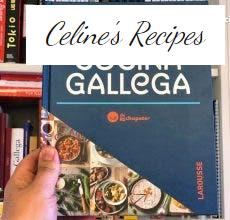
Galician Cuisine of Rechupete
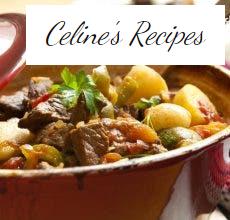
Tips for stewing and braising meat

